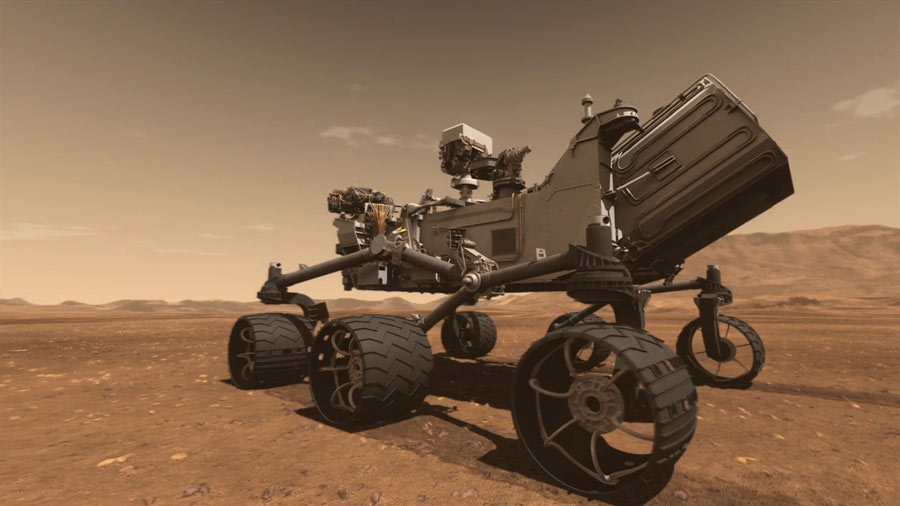NASA’s Mars 2020 Rover is taking off on July 30, 2020 for a seven-month journey to the mysterious Red Planet. It is planned to touch down on February 18, 2021.
To gain some insights into the soundscape in the Martian atmosphere, the Mars 2020 Rover will be outfitted with audio equipment from DPA Microphones. For most of the journey, the audio equipment will be dormant but once the Rover reaches the Martian atmosphere, the mics will allow Earth to experience the sounds of the descent.
Among other things, we expect to hear the friction of the atmosphere, Martian winds and the sounds of dust displaced as the Rover touches down.
Sounds from outer space
The first to be rigged with microphones, the agency's latest Mars rover has already picked up the subtle sounds of its own inner workings during interplanetary flight.
A DPA 4006 Omnidirectional Microphone is devoted to capturing some or all of the entry, descent, and landing (EDL) sequence of the Perseverance Rover when it lands on Mars in February, 2021, but it has already started to record the sounds of the spacecraft as it hurtles through interplanetary space. (It's quiet so turn up the volume if you can't hear it at first.) You can read more about the mission and the audio on the
NASA Mars website.
Hear the sound of Martian wind
Until recently, no one had ever heard anything from within the Martian atmosphere. In fact, the first sounds were only heard on December 1, 2018. A highly-sensitive seismometer on board NASA's InSight Mars Lander recorded vibrations caused by Martian wind. In addition, the vehicle's air pressure sensor also recorded the sound of wind. The sounds were picked up by instruments made for other purposes than sound thus the recordings are analogies to what you could expect to hear.
To gain some further insights into the Martian soundscape, the Mars 2020 Rover will be outfitted with audio equipment from DPA Microphones. Just imagine the range of sounds that a dedicated microphone could record during the trip – leaving outer space, entering the atmosphere and, eventually, on the planet's surface.

What DPA equipment is making the trip?

For this partnership, NASA has strenuously tested a variety of mics and chosen a selection of equipment from DPA. The 4006 Omnidirectional Microphones will be the Rover's "ears"; attached to the vehicle and paired with MMP-G Modular Active Cables, which will act as ultra-transparent preamplifiers. Inside the body of the vehicle, acting as the auditory part of the "brain", will be a MMA-A Digital Audio Interface. The MMA-A's job is to digitalize the audio in the highest quality and send it to a computer in the Rover through a USB connection.

The trip to Mars is not a simple walk in the park. It will subject the Rover to extreme temperatures (as low as -100°C/ -148°F), wildly varying travel pressure and intense vibrations. To ensure that the equipment lands on Mars in good working order, the spacecraft design team has created a specialized enclosure to mount the MMA-A interface inside the rover chassis. In addition, NASA's Jet Propulsion Laboratory (JPL) and the DPA R&D team worked together to create a custom MMP-G amplifier housing to bolt onto the exterior of the Rover.
Besides the customized amplifier housing, no major changes were made to the equipment once it left the DPA factory. The mic you know and love, the one that captures your favorite orchestra arrangement or records ambient sound for your favorite TV series is the same as the one that will take the long trip to Mars.